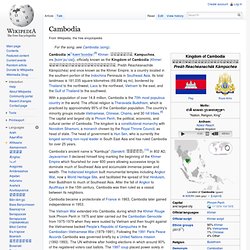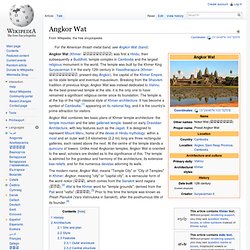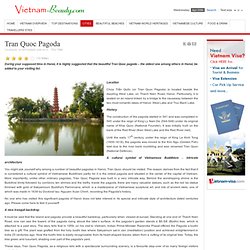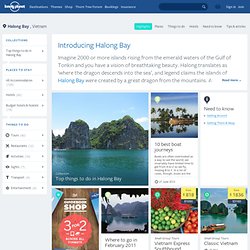

Cambodia. Cambodia ( i/kæmˈboʊdiə/;[8] Khmer: កម្ពុជា, Kampuchea, IPA: [kɑmˈpuˈciə]), officially known as the Kingdom of Cambodia (Khmer: ព្រះរាជាណាចក្រកម្ពុជា, Preăh Réachéanachâk Kâmpŭchéa) and once known as the Khmer Empire, is a country located in the southern portion of the Indochina Peninsula in Southeast Asia.

Its total landmass is 181,035 square kilometres (69,898 sq mi), bordered by Thailand to the northwest, Laos to the northeast, Vietnam to the east, and the Gulf of Thailand to the southwest. Cambodia's ancient name is "Kambuja" (Sanskrit: कंबुज).[10] In 802 AD, Jayavarman II declared himself king marking the beginning of the Khmer Empire which flourished for over 600 years allowing successive kings to dominate much of Southeast Asia and accumulate immense power and wealth.
The Indianized kingdom built monumental temples including Angkor Wat, now a World Heritage Site, and facilitated the spread of first Hinduism, then Buddhism to much of Southeast Asia. Name[edit] History[edit] Angkor Wat. Angkor Wat (Khmer: អង្គរវត្ត) was first a Hindu, then subsequently a Buddhist, temple complex in Cambodia and the largest religious monument in the world.

The temple was built by the Khmer King Suryavarman II in the early 12th century in Yasodharapura (Khmer: យសោធរបុរៈ, present-day Angkor), the capital of the Khmer Empire, as his state temple and eventual mausoleum. Breaking from the Shaivism tradition of previous kings, Angkor Wat was instead dedicated to Vishnu. As the best-preserved temple at the site, it is the only one to have remained a significant religious center since its foundation.
The temple is at the top of the high classical style of Khmer architecture. It has become a symbol of Cambodia,[1] appearing on its national flag, and it is the country's prime attraction for visitors. History[edit] Angkor Wat lies 5.5 kilometres (3.4 mi) north of the modern town of Siem Reap, and a short distance south and slightly east of the previous capital, which was centred at Baphuon. Vietnam. Blessed with a ravishing coastline, emerald-green mountains, breathtaking national parks, dynamic cities, outstanding cultural interest and one of the world’s best cuisines, Vietnam has it all.

The Vietnamese Experience Vietnam is a nation going places. Fast. Its people are energetic, direct, sharp in commerce and resilient by nature. This is an outrageously fun country to explore, the locals love a laugh (and a drink) and you’ll have plenty of opportunities to socialise with them and hear their tales. A Cultural Smorgasbord This is a country of myriad influences and reference points. Big Nature, Booming Cities If you want visual dramatics, Vietnam delivers. Read more. Tay Phuong Pagoda. Tay Ho Pagoda. Tran Quoc Pagoda. Thursday, 04 September 2008 04:19 Thu Tam During your supposed time in Hanoi, it is highly suggested that the beautiful Tran Quoc pagoda – the oldest one among others in Hanoi, be added to your visiting list.

Location Chùa Trấn Quốc (or Tran Quoc Pagoda) is located beside the dazzling West Lake, on Thanh Nien Road, Hanoi. Particularly, it is seated on an island linked by a bridge to the causeway between the two most romantic lakes of Hanoi: West Lake and Truc Bach Lake. History The construction of the pagoda started in 541 and was completed in 545 under the reign of King Ly Nam De (544-548) under its original name of Khai Quoc (National Founder).
Until the early 17th century, under the reign of King Le Kinh Tong (1600-1618), the pagoda was moved to the Kim Ngu (Golden Fish) Islet due to the river bank crumbling and was renamed Tran Quoc (National Defence). A cultural symbol of Vietnamese Buddhism – intricate architecture A nice tranquil backdrop More Tourist Attractions In Hanoi: Ngoc Son Temple. Bach Ma Temple. Ha Long Bay. Why Halong. Lonely Planet. Imagine 2000 or more islands rising from the emerald waters of the Gulf of Tonkin and you have a vision of breathtaking beauty.

Halong translates as ‘where the dragon descends into the sea’, and legend claims the islands of Halong Bay were created by a great dragon from the mountains. As it charged towards the coast, its flailing tail gouged out valleys and crevasses. When it finally plunged into the sea, the area filled with water, leaving only the pinnacles visible. Designated a World Heritage site in 1994, this mystical landscape of limestone islets is often compared to Guilin in China or Krabi in southern Thailand.
In reality, Halong Bay is more spectacular. Beyond a boat cruise, visitors to Halong also come to explore the caves. Sprawling Halong City is the bay’s main gateway, but the raffish collection of highrise hotels and karaoke bars is not a great introduction to this incredible site. Most visitors sensibly opt for tours that include sleeping on a boat in the bay. Ha Long Bay. Ha Long Bay Ha Long Bay, in the Gulf of Tonkin, includes some 1,600 islands and islets, forming a spectacular seascape of limestone pillars.

Because of their precipitous nature, most of the islands are uninhabited and unaffected by a human presence. The site's outstanding scenic beauty is complemented by its great biological interest. Baie d'Ha-Long La baie d'Ha-Long, dans le golfe du Tonkin, compte environ 1 600 îles et îlots qui créent un paysage marin spectaculaire de piliers de calcaire. خليج هالونغ يتضمن خليج هالونغ في خليج تونكين حوالى 1600جزيرة صغيرة تشكل منظراً بحرياً رائعاً من الركائز الكلسية. Source: UNESCO/ERI 下龙湾 下龙湾坐落于东京海湾。 Бухта Ха-Лонг Бухта в Тонкинском заливе Ха-Лонг имеет живописнейший приморский ландшафт благодаря разбросанным на мелководье скалистым известняковым островкам (в количестве около 1,6 тысяч).
Bahía de Ha Long Situada en el golfo de Tonkín, la bahía de Ha Long cuenta con unas 1.600 islas e islotes que forman un espectacular paisaje marítimo de pilares calcáreos.